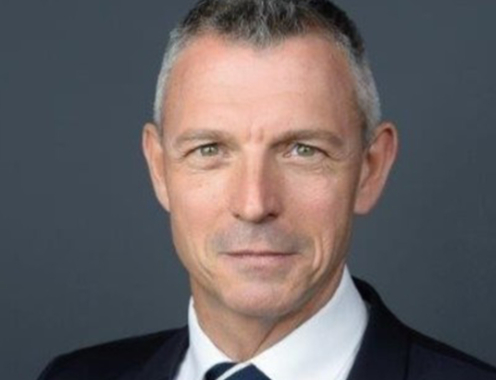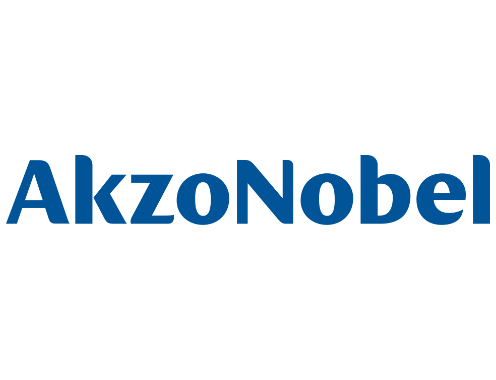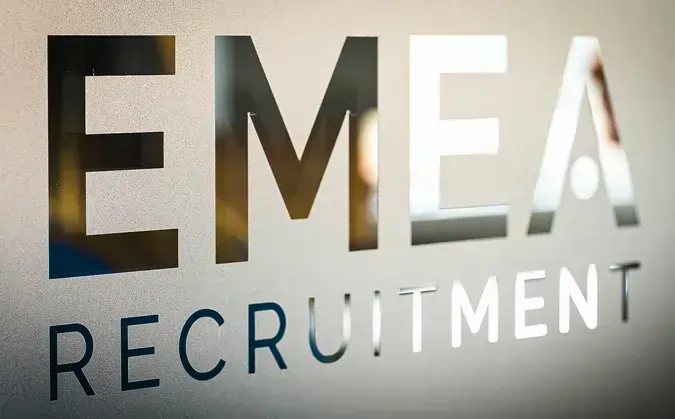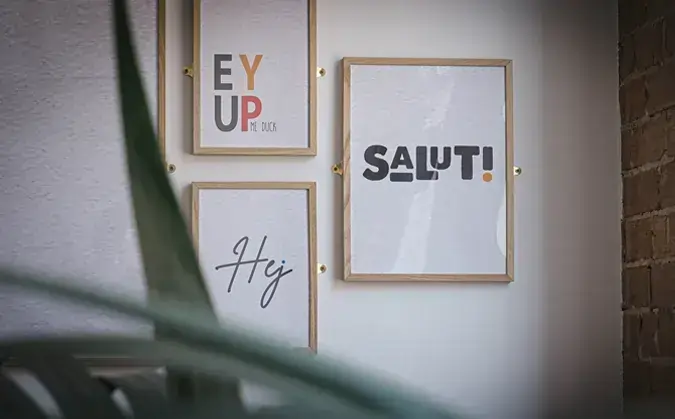Armand Sohet - Chief Sustainability, HR and Communications Officer


Armand Sohet is the Chief Sustainability, HR and Communications Officer at AkzoNobel in Amsterdam. He is an international HR leader and a true change agent with experience across diverse industries, including automotive, pharmaceuticals, software, defence, and energy.
Armand has successfully shaped HR organizations to support business strategy and enhance efficiency. His expertise extends to streamlining processes, leveraging big data, and developing unique KPIs for the function.
You mentioned that your team or other colleagues might sometimes overcomplicate things in HR. It struck me that you might have a way of simplifying complex ideas and presenting them in a business-oriented manner. Could you share a bit of insight into that?
James Burnham, who inspired George Orwell, wrote The Managerial Revolution in 1941. Burnham describes how capitalism evolved in the 20th century, shifting from ownership-based to management-based structures - a point that circles back to Max Weber’s ideas on bureaucracy in modern capitalism.
Burnham observed that, unlike in the past when businesses were led by their owners, the corporate landscape is now increasingly run by technocrats, bureaucrats, and managers. This transformation happened long ago, yet we didn’t fully notice its impact. Burnham’s concerns seem more relevant than ever, particularly with the rise of bureaucracy. This type of structure exists in government and industry alike, particularly in Europe and noticeably in France. It's often disconnected from real productivity or shareholder interests.
Take the case of my own HR function, though the same applies to all functions. I had 35 senior executives in a 700-person department - a high number for a streamlined operation. Instead of driving efficiency, this excess of top managers slowed down decision-making. It wasn’t the individuals who were at fault; all were high-quality professionals. Over the last 18 months, I undertook a drastic simplification of the organization, reducing top management by more than 40%. The result? Far from creating frustration, our employee satisfaction survey shows higher engagement, and the organization is now far more responsive to business needs.
The second key to success is the smart use of technology. While tech promises efficiency, it often has the opposite effect. Take ERP systems like SAP, which were supposed to streamline processes. Instead, they have added layers of complexity to functions like Finance and HR. The productivity gains we expected haven’t materialized - what the American economist Robert Solow called the "productivity paradox" of technology in business. Conversely, leveraging big data tools flexibly allows for quantum leaps in data-driven decision-making.
Put simply, technology is a useful servant but a dangerous master.
Finally, driving productivity and simplicity requires careful selection of the people who remain in your organization. The shorter the structures, the more decisive the human factor becomes. In the end, as always, people make the difference.
Do you think that’s just a reflection of past technologies? Or do you believe future technologies might have a greater capability to impact productivity and achieve what earlier tech aimed to deliver?
Since I started working, I have observed five major technological revolutions: the personal computer, the internet, social media, big data, and now AI. The most significant was undoubtedly the PC, which could reduce tasks that once took hours to just minutes, almost overnight.
The internet followed, greatly enhancing personal productivity and work efficiency. Suddenly, you could instantly access critical information, such as exchange rates for drafting employment contracts worldwide - data that was previously complex and time-consuming to gather.
Social media has had an ambiguous impact on productivity. On one hand, it has been a major distraction. On the other, LinkedIn, for example, has dramatically lowered recruitment costs. This shift, particularly in corporate communications, validated Marshall McLuhan’s famous theory: The medium is the message.
However, a major, often overlooked reality is the gap between the grand promises of technology vendors and the actual business impact. Without high-quality data, there is no meaningful analysis or decision-making. Achieving quality data requires disciplined system architecture and harmonization - an arduous task few companies execute well.
Even with perfect data, transforming it into actionable insights remains a challenge. I often paraphrase Johan Cruyff, the legendary Dutch footballer: Playing HR is simple, but playing simple HR is the hardest thing there is.
Will the Gen Z professionals coming into HR naturally gravitate towards data and tech, and therefore make that transition?
I don’t believe categorizing individuals by their year of birth makes much sense historically. The debate between the “ancients” and the “moderns” has existed since ancient Greece. The reality is that perspectives change depending on whether you have your life ahead of you or behind you. Besides, I wonder what consultants will talk about after Generation Z - since we’ve run out of letters. Perhaps that’s why everyone is focusing on AI: a return to the start of the alphabet, ensuring endless discussion topics.
More seriously, my experiments with AI within my teams - including those under 30 - have not been particularly conclusive. For example, I had a young team member organizing AI awareness sessions who had never used ChatGPT, Google Gemini, or Meta AI. Likewise, when I asked our creative department to generate an artificial image representing "the future of paint," I expected rapid responses using DALL-E, ImageFX, Adobe Firefly, or similar tools. Instead, I was told they were “studying the request with the external communications agency.”
This highlights a striking gap between the rhetoric surrounding technology and its actual application in the workplace.
Maybe there's an assumption on my part that people are more digital or tech-savvy in that age group. I guess it's a sweeping statement.
It is, but it’s a common one. People assume younger generations are naturally more tech-savvy, but that’s not always the case. Digital fluency isn’t just about age - it’s about mindset and exposure. That’s why I actively seek out people who are willing to learn and apply technology effectively, regardless of their background.
When I was working at my last company, I also taught at Zurich University. I would always ask faculty to point me toward their best students. One of them was a Danish student, Philip. He had no particular interest in HR, but I convinced him to give it a try. He started as a trainee and later joined permanently.
He had no prior experience in Compensation & Benefits or HR, but within months, he single-handedly replaced an entire three-person team. Why? Because he understood numbers, systems, and mechanisms better than the so-called experts.
I hired him in November, and by March, he was responsible for delivering the company’s bonuses. He nailed it - so much so that he received a standing ovation. And remember, this was someone who didn’t know HR, hadn’t worked with SAP, and had never done this before. He simply had the right mindset.
If I were hiring today, I’d continue looking outside traditional HR circles - Finance, Accounting, R&D, Marketing. The best hires often come from unexpected places.
I’d love to hear more about what drives you and where your energy comes from.
Energy is everything. It’s what fuels the world - whether coal, oil, or electricity. Nations rise and fall depending on their access to energy. If you think about it, the history of economy can almost be divided into pre-oil and post-oil eras.
The same applies to individuals. Without energy, nothing moves. Nothing changes. As a leader, you need to generate energy and channel it effectively, absorb stress, and radiate energy.
A good friend of mine once said there are two types of people: energizers and vampires. Energizers lift people up, bring enthusiasm, and drive things forward. Vampires drain the room, suck the motivation out of a team, and slow everything down. In organizations, you need to remove the vampires - no matter how competent they might seem.
Sometimes, all it takes is someone telling you that something is possible. Once you believe it, you find a way.
That connects to your mission: Helping people push beyond their limits. Did anyone do that for you early in your career?
My mother. She wasn’t an easy person, but she believed in me. That’s something not everyone gets. There are many people - brilliant people - who never had someone believe in them. But she did, even when my teachers didn’t. Even when my father didn’t.
I love my father deeply, but belief is different from love. My mother instiled in me this constant drive to learn, to never settle, to always question things. She used to say, “The only thing you know is that you know nothing.” That mindset stuck with me.
Beyond her, I’ve had many people shape me - friends, mentors, colleagues. I could probably list 20 or 25 names, each playing a significant role in different ways.
One of my oldest friends, for example, is someone I admire immensely. He’s completely different from me - very intellectual, very reflective. Just being around him has shaped my thinking.
You mentioned reading Orwell recently. Any other books that have stood out to you?
One that struck me recently was The Spinoza Miracle by Frédéric Lenoir. I didn’t read Spinoza’s original work - it’s dense - but this book made it accessible.
Spinoza was a fascinating figure. A Portuguese-Jewish philosopher who settled in the Netherlands, his ideas influenced Einstein, Freud, Bergson - some of the greatest minds of the modern age.
What I found particularly interesting was his perspective on joy and optimism. Compared to Plato, for instance, who saw love as a desire for something we lack, Spinoza believed love was a source of power, something that grows when we nurture it.
That idea of positive energy resonated with me, and I couldn’t help but wonder: Has Dutch culture been shaped by Spinoza’s optimism? Living here, I see so much of that spirit - pragmatic, forward-thinking, and resilient.
Is there anything else you’d like to share?
People often ask me about hiring and assessing talent. I once explained it to a Swiss-German audience using an analogy: people are like wine.
Imagine you buy a €3,000 bottle of Petrus. You’re excited, expecting an unforgettable experience. You pair it with camembert - because, well, it’s French, and it seems like a sophisticated match.
But when you taste them together, it’s awful. The lactic acid in the cheese clashes with the wine’s tannins, creating a metallic, unpleasant aftertaste.
Most people won’t admit it, though. They’ve already convinced themselves it must be good - after all, it’s an expensive bottle. But they would have been better off with a €7 bottle of cider or a nice ten-year-old champagne, both of which would actually complement the cheese.
This is exactly what happens with hiring. Companies often go for the “Petrus” candidate - the impressive, high-profile hire - without considering whether they actually fit.
The key to hiring isn’t finding the best person on paper; it’s finding the right match.
So, what cheese do you eat with red wine?
It depends on the wine. My top choices would be Cornish Blue or Stilton, paired with a strong, port-like red like Maury.
Le Comté, from my home region, is another favorite. With that, I’d go for a Vin Jaune, the golden Jura Wine.
If you’re pairing with goat cheese, I would choose a white Sancerre, but I wouldn't rule out a red wine that’s not too tannic - something from the Loire Valley, like a Chinon, works well.
Some cheeses, though, are nearly impossible to pair with red wine. That’s when you reach for cider or champagne. But that’s a whole other conversation - I could talk about this for hours.
Thank you to Armand for speaking to Katie Insley, Director in our Human Resources recruitment division in the Netherlands.
Views and opinions contained within our Executive Interviews are those of the interviewee and not views shared by EMEA Recruitment.






You can also use your social account to sign in. First you need to:
Accept Terms & Conditions And Privacy Policy